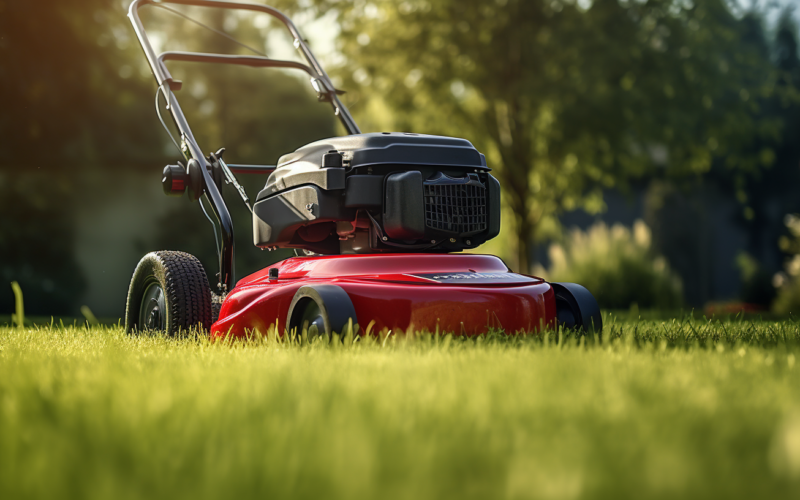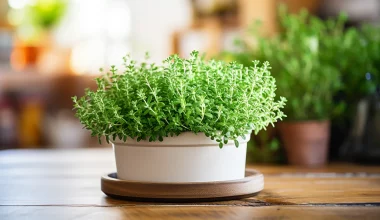Proper lawn mowing techniques are essential for maintaining a well-manicured and healthy yard. The way you mow your lawn directly impacts its overall appearance, growth, and health. By following the right mowing practices, you can promote healthy grass growth, prevent weed infestation, and create a beautiful outdoor space. In this guide, we will explore the key lawn mowing techniques that will help you achieve optimal results and keep your yard looking its best.
1. Set the Right Mowing Height
One of the most important aspects of lawn mowing is setting the correct mowing height. Different grass species have specific height requirements, and mowing too low or too high can be detrimental to their health. Aim to follow the one-third rule, which means you should never remove more than one-third of the grass blade length in a single mowing session.
Cool-season grasses, such as Kentucky bluegrass and tall fescue, generally have an ideal mowing height between 2.5 to 3.5 inches.
Warm-season grasses, like Bermuda grass and Zoysia grass, are typically mowed at a lower height, ranging from 1 to 2.5 inches.
By mowing at the appropriate height, you promote a healthier root system, increase the grass’s ability to photosynthesize, and shade out weed growth.
2. Use a Sharp Mower Blade
Using a sharp mower blade is crucial for achieving clean and precise cuts. A dull blade tears the grass instead of cleanly cutting it, leading to a brown and ragged appearance. It also makes the grass more susceptible to disease and pest infestation. Make it a habit to sharpen your mower blade at the beginning of each mowing season or whenever it shows signs of dullness.
A sharp blade ensures a neat and even cut, preventing stress on the grass and allowing it to heal faster. Regular blade maintenance will not only improve the overall look of your lawn but also contribute to its overall health.
3. Follow the 1/3 Rule and Mow Frequently
To maintain a healthy lawn, it’s important to follow the 1/3 rule mentioned earlier. Avoid the temptation to let the grass grow too long between mowing sessions and then remove more than one-third of the grass height at once. This practice weakens the grass, makes it more susceptible to disease and stress, and results in an uneven appearance.
Instead, mow your lawn regularly, aiming for a consistent mowing schedule. This ensures that the grass stays within the recommended height range and encourages a denser and healthier turf.
4. Vary the Mowing Pattern
Varying the mowing pattern is another technique to promote even growth and prevent the grass from leaning in a particular direction. Mowing in the same direction each time can cause the grass blades to bend, resulting in a striped or uneven look.
Change the mowing pattern with each mowing session, such as mowing horizontally one week and vertically the next. This approach helps the grass stand upright and creates a more uniform appearance. Additionally, alternating the mowing pattern prevents soil compaction and encourages the grass to grow in different directions, resulting in a stronger and more resilient lawn.
5. Mow When the Grass is Dry
Mowing wet grass is not only challenging but can also harm your lawn. Wet grass tends to clump together, clogging the mower deck and preventing a clean cut. Additionally, the weight of the mower can compress the wet soil, leading to soil compaction issues.
Ideally, mow your lawn when the grass is dry, preferably in the early morning or late afternoon. This allows the grass blades to stand upright, ensuring a cleaner and more even cut. Mowing on a dry lawn also minimizes the risk of disease transmission since moisture promotes fungal growth.
6. Leave the Grass Clippings
Contrary to popular belief, leaving grass clippings on the lawn is beneficial for its health. Grass clippings act as a natural mulch, returning nutrients to the soil and promoting healthy microbial activity. This process, known as grasscycling, reduces the need for fertilizers and helps the grass retain moisture.
To ensure the clippings are not too long or clumpy, mow frequently and follow the 1/3 rule. The clippings will decompose quickly and blend into the lawn, providing valuable nutrients and contributing to a greener and healthier yard.
7. Maintain Mower Speed and Safety
Maintaining a consistent mower speed is essential for achieving an even cut and preventing scalping. Scalping occurs when the mower cuts the grass too low, exposing the stems and leaving brown patches. Adjust the speed of your mower to a comfortable pace, allowing it to effectively cut the grass without rushing or slowing down.
Additionally, prioritize safety while mowing your lawn. Wear appropriate protective gear, such as safety goggles and ear protection. Clear the area of any obstacles, rocks, or debris that could potentially damage the mower or cause injury. Be mindful of children and pets in the vicinity and ensure they are at a safe distance during mowing.
Conclusion
Mastering proper lawn mowing techniques is essential for maintaining a well-manicured and healthy yard. By setting the right mowing height, using a sharp blade, following the 1/3 rule, varying the mowing pattern, mowing when the grass is dry, leaving grass clippings, and practicing mower speed and safety, you can achieve a beautiful and vibrant lawn. Take the time to mow your lawn with care and precision, and you’ll enjoy a healthy and attractive yard that enhances the beauty of your home.






